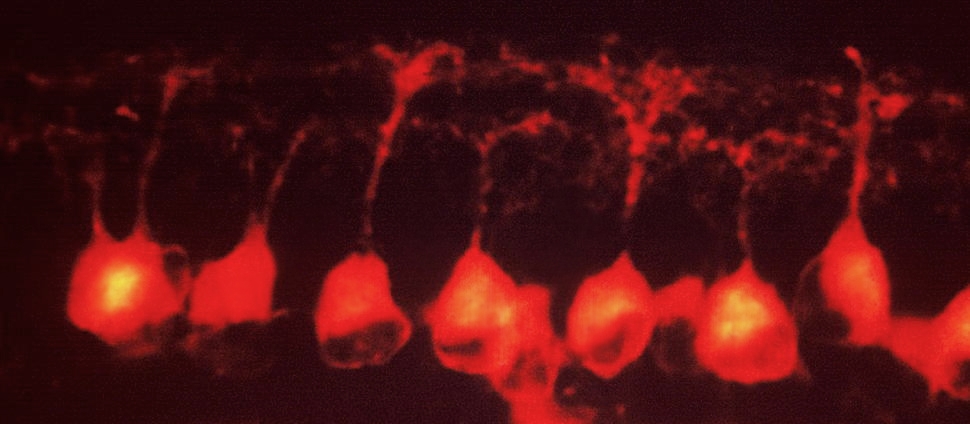Document Type
Article
Publication Date
3-13-2013
Publication Title
Journal of Neuroscience
Abstract
The axons of retinal ganglion cells (RGCs) form topographic connections in the optic tectum, recreating a two-dimensional map of the visual field in the midbrain. RGC axons are also targeted to specific positions along the laminar axis of the tectum. Understanding the sensory transformations performed by the tectum requires identification of the rules that control the formation of synaptic laminae by RGC axons. However, there is little information regarding the spatial relationships between multiple axons as they establish laminar and retinotopic arborization fields within the same region of neuropil. Moreover, the contribution of RGC axon lamination to the processing of visual information is unknown. We used Brainbow genetic labeling to visualize groups of individually identifiable axons during the assembly of a precise laminar map in the larval zebrafish tectum. Live imaging of multiple RGCs revealed that axons target specific sublaminar positions during initial innervation and maintain their relative laminar positions throughout early larval development, ruling out a model for lamina selection based on iterative refinements. During this period of laminar stability, RGC arbors undergo structural rearrangements that shift their relative retinotopic positions. Analysis of cell-type-specific lamination patterns revealed that distinct combinations of RGCs converge to form each sublamina, and this input heterogeneity correlates with different functional responses to visual stimuli. These findings suggest that lamina-specific sorting of retinal inputs provides an anatomical blueprint for the integration of visual features in the tectum.
Volume
33
Issue
11
First Page
5027
Last Page
5039
DOI
10.1523/JNEUROSCI.4990-12.2013
ISSN
02706474
Rights
© 2013 the authors.
Version
Version of Record
Recommended Citation
Robles, Estuardo; Filosa, Alessandro; and Baier, Herwig, "Precise Lamination of Retinal Axons Generates Multiple Parallel Input Pathways in the Tectum" (2013). Neuroscience: Faculty Publications, Smith College, Northampton, MA.
https://scholarworks.smith.edu/nsc_facpubs/69



Comments
Archived as published. Open access article.